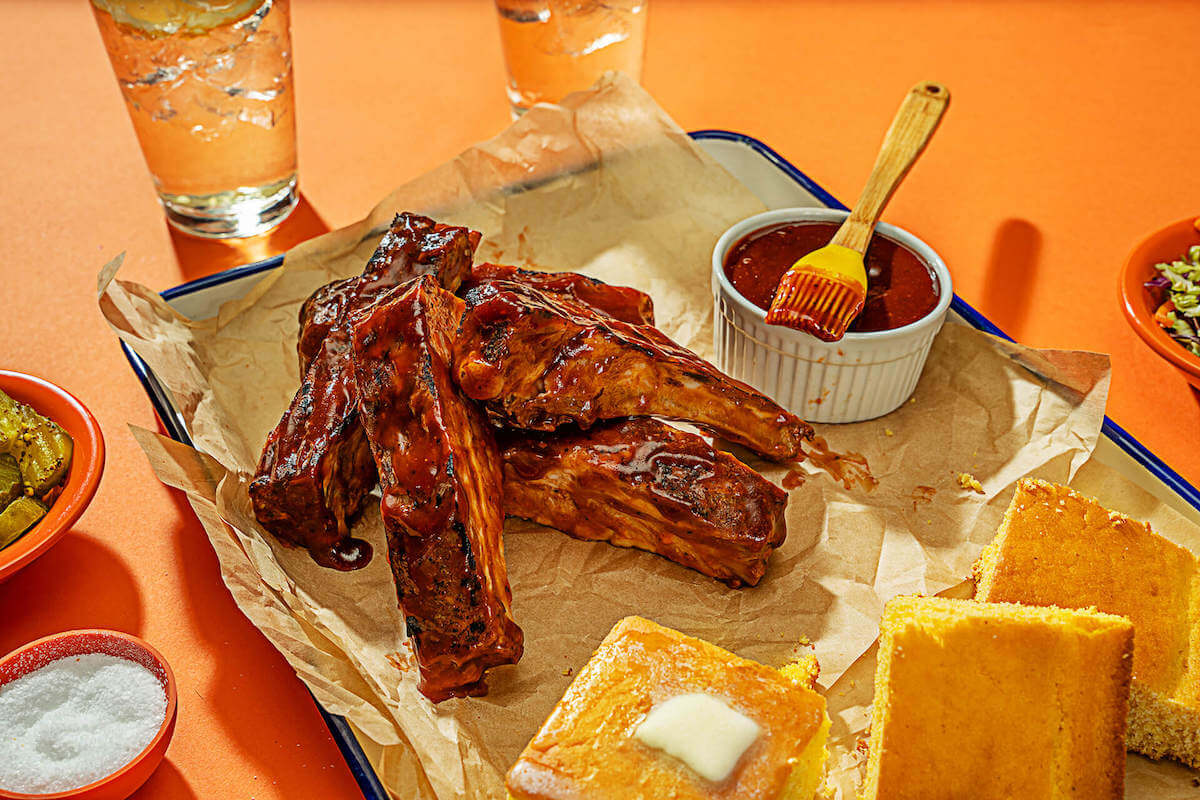4 benefits of a seasonal menu and how to design one
Skip the article and turn takeaways into action by scheduling a call with our team.
Designing a restaurant menu is one of the most important things a restaurateur or chef will do in their business. The menu is the central piece of information a customer has about a restaurant. But a menu does not have to be permanent, and a restaurant can have more than one menu. A seasonal menu can help bring fresh menu items to the dining room, allow chefs to experiment with new dishes, and keep customers interested with limited-time offers.
Regional food trends and seasonal ingredients may help you draft your menu and work in concert with local farms. And restaurants can find significant benefits from offering a seasonal menu, including boosting social media reach and keeping costs down.
So let’s look at how to design a seasonal menu, incorporate it into your current menu, and use it to fill up your tables.
4 benefits of seasonal menus

A seasonal menu is, simply, a menu that changes with the seasons. There are two ways to go about using a seasonal menu. Either you can make sweeping menu changes with the seasons or you can keep a solid, year-round menu but add seasonal offerings. If you opt for the second choice, you’ll want to keep your seasonal menu relatively small, to the tune of a few unique appetizers, main courses, and desserts.
Offering a seasonal menu gives your chefs an opportunity to play around with new flavors and keep loyal customers intrigued. It also creates a sense of urgency in both regular customers and new customers alike, since they’ll know the offerings will only be around for about three months.
Sourcing local ingredients ensures your food stays fresh no matter what time of the year it is, and since fresh ingredients taste good, that’s a win. Sustainable dining isn’t just a buzzword here—seasonal menus help local small farms stay in business while cutting pollution since the food isn’t transported across the globe. Collaborating with local food suppliers can help the dining experience feel like an act of community as well, since you can (and should) tell diners where their food came from.
1. Lower food costs
Inventory costs can be expensive, and keeping your food cost percentage as low as possible is an excellent way to boost your bottom line. So relying on seasonal produce can keep costs down while keeping flavors fresh.
Importing vegetables from across the world is both expensive and environmentally unwise. Switching to locally available Brussels sprouts instead of imported asparagus in the winter, for example, is a simple way to mix up your menu while radically lowering costs and focusing on sustainability.
One benefit of having a seasonal menu is that you stop offering menu items when the ingredients are no longer in season. This gives your restaurant flexibility in cost balancing and keeps customers interested in what’s new.
2. Keep staff and customers engaged
Serving the same menu items day-in and day-out can be a drag for your staff. A new dish in the kitchen can get your chefs excited to make it and your servers excited to sell it. Ideally, it’ll get your customers excited to buy it, too. Since the restaurant industry turnover rate is so high, it’s wise to keep staff mentally stimulated with new dishes. And since chefs can have a significant say in creating these new menu items, allowing their creative side to shine will help them feel pride in their work. That’s not a gimmick—it’s just a good strategy.
Loyal staff and regular customers are the lifeblood of any successful restaurant. If a regular has worked their way through your menu, they’ll likely be keen to try something new. Newness and anticipation keep customers coming back, especially if they know they can still get their favorite dishes that never disappoint. For this reason, it will make sense for most restaurants to offer a seasonal menu in addition to their regular menu.
3. Bartenders get to create new drinks
Drink preferences change with seasons just like food does, which gives your bar staff the opportunity to hop in the creative game as well. Pairing wine and beer with dishes as well as house-made cocktails can help entice customers to try fun new combinations. Advertising a special seasonal happy hour can help boost sales numbers in slower hours with strategic pricing on drinks and appetizers.
4. Capitalize on trends
Dining trends are ever-changing, and a seasonal menu gives you the opportunity to be flexible with your offerings to give customers what they want. When you see a new food trend start to dominate your city, as one inevitably will, you can hop on the trend within a matter of weeks to stay ahead of the curve. Keep a close ear to the ground and pay attention to what’s popular in your area.
How to design a seasonal menu

When creating a seasonal menu, you first need to make an important decision: Will it be in addition to a regular menu, or will it be the entire menu?
Many restaurants that choose to offer a seasonal menu do so in addition to regular offerings. If this is the way you want to go, you’ll want to decide what proportion of your menu should be seasonal. You can offer just a few seasonal dishes or make 50% or more of your dishes seasonal.
A lot will depend on the type of restaurant you are: Restaurants that are more boutique, high-end, or avant-garde can include higher percentages of seasonal dishes on their menu.
Restaurants that focus on farm-to-table service or are otherwise heavily reliant on local farms can create rotating menus that are entirely seasonal. In fact, doing so can be one of the main features of such a restaurant.
How often to rotate your menu
Once you’ve figured out how much of your new menu should be seasonal, it’s wise to consider how often you should change it.
The word “seasonal” should give a good indication as to how often to design new menus: around four times a year. When in doubt, follow nature. Having a menu based on seasonal foods for winter, spring, summer, and fall can also help you in the creative department since menu offerings almost write themselves no matter what genre you’re in. The accessibility of in-season ingredients helps with decisions too. Seasonal flavors have written themselves into long-standing cultural traditions and help keep people in touch with seasonal changes.
Let’s get into what to serve. Here are ideas for each of the four seasons.
Spring seasonal menu ideas
Spring menus can focus on light, fresh dishes, especially in the form of appetizers like salads or artichoke dip. Salads with crispy arugula, fresh blueberries, and passion fruit could be a hit. In addition to traditional entrees, look to brighten flavors with citrus, herbs, or pesto.
Popular drink pairings can follow the trend towards bright and herby, with classics like a mint julep, Tom Collins, or any variation of cocktails using fruit and herbs. Wines can be equally bright in flavor to match light dishes, like pinot noir or grenache for red or pinot grigio for white.
Summer seasonal menu ideas
Ask anybody what they think of when they think of summer foods, and watermelon will probably be at the top of the list. Serving fresh, cold fruit as an appetizer or dessert is a crowd-pleaser in the summer, especially in hot climates. For entrees, look for flavors with a bit of zip like radishes and red onions combined with the freshness of herbs like cilantro. Add some summer classics with grilled meat and veggies, like zucchini.
Summer drinks should be refreshing, like margaritas or sangria—and these can be made in many different varieties to suit your location. Wine pairings for grilled meat can include tempranillos, cabernets, or sangiovese, or a dry white like sauvignon blanc for chicken or fish.
Fall seasonal menu ideas
A fall menu calls for classics. Cranberries, sweet potatoes, and earthy flavors suit the season. Savory baked dishes like meat pies or hearty stews can be popular menu items. When designing a fall seasonal menu, think about comfort food that’s shareable: gooey mac and cheese, roasted root veggies like fennel, and savory, crusty bread will make your diners feel cozy and hungry for more.
Fall cocktails can be similarly earthy and spiced, focusing on whisky or other dark liquors for body and adding spices like cinnamon, cloves, or more.
Winter seasonal menu ideas
Certain dishes are perfect for the winter. Stews can be even more popular in the winter than in the fall, and nearly every region on earth has stew that can be adapted to a solid winter menu. From a classic French cassoulet or a Cantabrian cocido lebaniego to a Georgian kharcho or Korean kimchi stew, anything that keeps the belly and spirits warm will be a hit.
It’s hard to beat a hot mulled wine during a chilly winter night, and making one your house special can be a solid advertisement. Winter cocktails should warm the stomach and the spirits (no pun intended), with earthy flavors brought to life with citrus and fruits.
How to advertise your seasonal menu

In addition to laying down some serious flavor, a seasonal menu offers serious advertising opportunities. Changing offerings gives you a good reason to make consistent social media updates with beautiful photos of your new dishes. Newness has a way of inducing curiosity as well, so getting the word out about your seasonal menu can be a good way to entice customers to visit.
Harness tools like Yelp, social media, and influencers
A combination of advertising via paid posts and organic traffic on social media platforms can help drive traffic of all kinds. If you’re already using Yelp Guest Manager, restaurants that use Yelp Guest Manager and Yelp Ads experience up to a 17% monthly lift in diner bookings through Yelp.
Discussing the values behind your seasonal food choices can be a great way to engage your audience. Consider answering questions like, “Why are locally sourced ingredients tastier,” or “#X seasonal dishes with local ingredients,” or “How seasonal food can help reduce pollution.” Short videos and photos of the dishes you intend to serve can make for eye candy and make bellies rumble in anticipation while keeping eyes on your platform.
Working with local food influencers can also help drive traffic. If there’s a popular social media influencer in your neck of the woods, reach out to them to discuss ways to work with them, since many customers find new restaurants via influencers.
Team up with local farmers
So, you’ve got your local suppliers. Great! The next step is making your partnership beneficial beyond simply selling their products. Making your seasonal menu a joint venture by promoting your supplier (and vice-versa) can lead to increased sales for both parties as well as satisfied palates. Consider hosting events with your supplier so customers can get to know them and be more familiar with the fresh food in their area.
Host special events around seasonal dishes
Many seasonal ingredients lend themselves to festive celebrations, and even the ones that aren’t traditionally celebrated can be. Consider: Every year, the release of Beaujolais nouveau calls for celebration. In 2024, the date will be November 21. That’s an excellent opportunity to plan a unique event around the (delicious) wine and either create a unique menu that fits it or promote your fall menu.
There are countless other options. Got a supplier with a bumper crop of pomegranates or artichokes? Celebrate it and invite the supplier! A local business like a distillery or brewery in town has a new beverage? Make an event and pair up! Doing so will give you an opportunity to advertise something unique while giving customers the chance to try something new and have fun doing it.
Freshen up all year round

Making a seasonal menu is a great way to attract customers, engage chefs, and keep costs down. It also works in tandem with nature, and it’s a beautiful thing when systems work naturally.
Keeping your front-of-house (FOH) ecosystem running smoothly is just as important as keeping your menu interesting. Right now, there’s no better way to do that than to rely on Yelp Guest Manager for all things FOH. Online reservations, check-ins, and waitlists? Check. Smooth table management? Check. Software integrations with POS systems and third-party delivery systems? Also check. It all works together.
So if you’re looking to make your operations as seamless as possible, hit us up for a free demo and we’ll show you the way around. When great food meets great service, new customers become regulars.